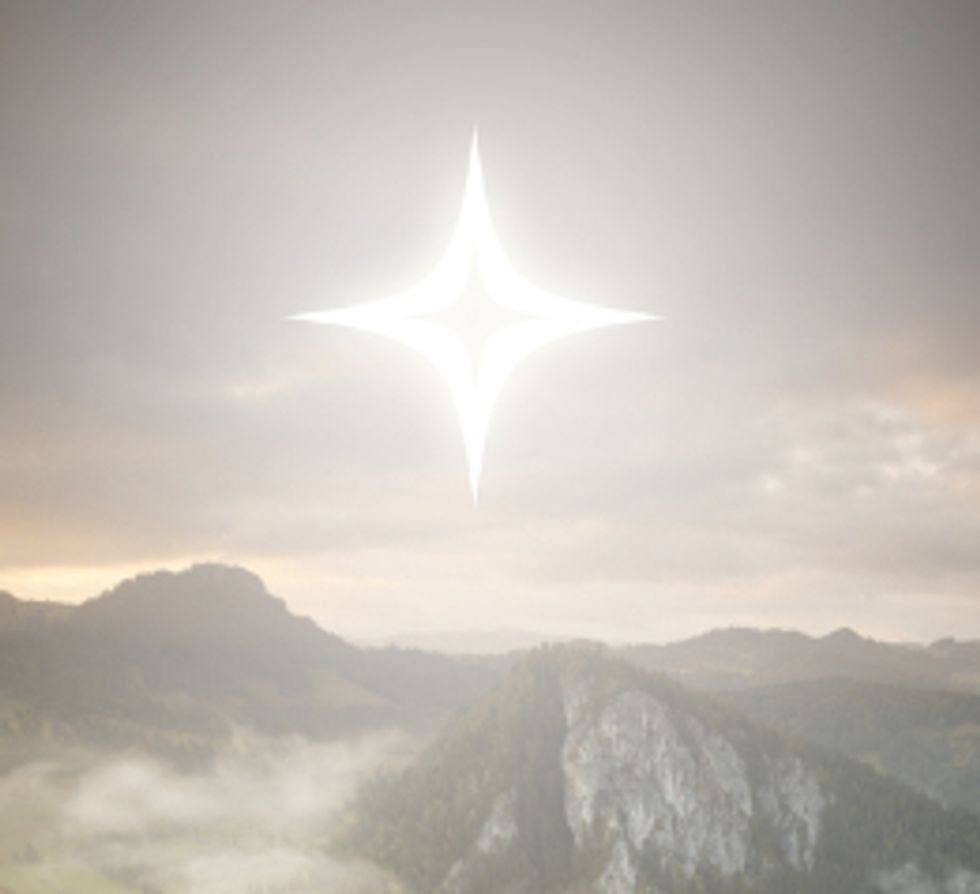
© 2024 Blaze Media LLC. All rights reserved.
Theoretical Astrophysicist Reveals How Evidence for an 'Unusual Event in the Sky' 2,000 Years Ago Could Be Tied to the Wise Men and Jesus' Birth as the Bible Claims
January 06, 2015
"I believe that the Magi sought with all of their resource and being for evidence of the creator of all things in the heavens."
Adults and children in Latin America and Spain, among other locations, are celebrating Three Kings' Day Tuesday, a joyous religious holiday that is held each year on the 12th day after Christmas.
The event marks the moment the wise men, also known as the Magi, followed a "star" in the sky and met Jesus Christ sometime after his birth, as recounted in the Bible.
It is that symbol in the heavens — the so-called "Christmas star" — that has captivated believers for centuries, finding its way into traditional nativity displays, songs and even research initiatives.
Consider that Dr. Grant J. Mathews, a professor of theoretical astrophysics and cosmology at the University of Notre Dame and the director of the school's Center for Astrophysics, is among the experts who has invesigated "unusual events in the sky" near the time of Christ's birth.

Matthews, who believes that it's "quite likely" the Christmas star referenced in the Bible led the Magi to Jesus' location sometime following his birth, recently told TheBlaze that he began years ago investigating modern archives of astronomical observations to see what might have unfolded.
While traditional Christmas stories generally refer to the phenomenon in the sky that led the wise men to Christ as a "star," Matthews said that the actual event likely wasn't a star at all.
"It's probably not a 'star' somehow hovering over a manger and pointing a beam of light as we traditionally view it. Any new star or comet in the sky was usually taken as a harbinger of disaster at that time," he said, noting in past interviews and appearances that the Magi wouldn't have followed a star due to perceived negative events to come. "It was most likely an unusual planetary alignment."
Matthews said that he believes three planetary alignments could have created the bright light in the sky that the Magi followed, though there's one pattern that he — among other researchers — believes is more plausible than the others.
"In my opinion the most [probable] was the occurrence of the Sun, Moon, Jupiter, and Saturn in Aries, with Venus in the next-door constellation Pisces along with Mercury and Mars on the other side in the next constellation Taurus," he said. "Michael Molnar put this hypothesis forward in the book 'The Star of Bethlehem'. It is corroborated by the writings of the famous ancient astronomer C. Ptolemy who noted that Aries (the ram) was the constellation associated with Judea."
Molnar, in fact, also detailed these thoughts in an interview with the New York Times back in 1999. And in a separate interview with Christianity Today, Molnar got even more specific, offering a possible date for his findings.
"I was amazed to find April 17, 6 B.C., was exactly when Jupiter was 'in the East,' a morning star," Molnar told the outlet. "So I knew I had an answer to the Star of Bethlehem."
Matthews echoed these sentiments, explaining them in further detail.
Speaking with TheBlaze more specifically about the contents of Matthew 2:9, which reads, "After they had heard the king, they went on their way, and the star they had seen when it rose went ahead of them until it stopped over the place where the child was," he said that the star may have actually been coming to rest in "Aries" — the constellation associated with Judea.
And rather than a star, the professor, like Molnar, said that it would have been the planet Jupiter coming to rest in the sky. It's an occurrence that he believes the wise men would have found profoundly noteworthy.
"The other planets and the Sun and Moon being there would have strengthened this and held great significance to the Magi," Matthews said. "That is why they would have arrived in Herod's court to ask, 'Where is new born ruler of Judea?"
Matthews said that Aries was the location of the vernal equinox — the beginning of spring — at the time and that the sun being located there was symbolic of spring and redemption. Adding the moon and Jupiter into the mix, the professor said that their presence, too, was symbolic of a special destiny of a new ruler.
"Saturn was the symbol of life. The other 'attending' planets were holding this up as something special," he said. "I calculated that such an alignment would not occur again for more than 16,000 years, and even then would not be in the constellation of the vernal equinox."
And that's not all. Matthews said that he ran calculations for the next 500,000 years and didn't find an alignment reminiscent of this one in the vernal equinox, calling what unfolded around Jesus' birth "a truly unique event."

Definitive details about the wise men aren't known outside of the what the Bible details, though Matthews believes that the Greek term for "wise men" likely refers to Zoroastrian priests who resided in Babylon and Mesopotamia, which he said only adds credence to the theory Molnar founded and he embraces.
"This was a very ancient religion that had their own belief in a 'trinity' and a coming messiah. Zoroaster literally means 'shining light," he said. "They had a belief that the stars, planets, sun and moon were tokens of the divine. Frankincense to them was a symbol of 'eternal light' used in their ceremonies. Hence, their gift of frankincense to the newborn king had great significance."
All of these details in mind, Matthews said that he's most surprised that God would have timed Jesus' arrival to come when astrologers, who were non-Hebrew, were around to interpret the message, especially considering that astrology wasn't allowed under the Jewish belief system.
"This explains why no one in Herod's court was aware of 'His star in the East' of which the Magi spoke," Matthews said.
The theoretical astrophysicist believes that God might have used the scenario as a symbolic gesture to show that all people — even non-Hebrews — were given redemption through Jesus. But he said there might also be another message embedded deep within the circumstances.
"Then, as today, God is a rewarder of those that seek him with all of their heart," he said. "I believe that the Magi sought with all of their resource and being for evidence of the creator of all things in the heavens. And that God chose to reward that."
Be sure to also read a 2009 article Matthews wrote about planetary alignments and the Christmas star and learn more about Three Kings' Day here.
--
Front page image via Shutterstock.com
Want to leave a tip?
We answer to you. Help keep our content free of advertisers and big tech censorship by leaving a tip today.
Want to join the conversation?
Already a subscriber?
Billy Hallowell is a digital TV host and interviewer for Faithwire and CBN News and the co-host of CBN’s "Quick Start Podcast."
Billy Hallowell
Billy Hallowell is a digital TV host and interviewer for Faithwire and CBN News and the co-host of CBN’s "Quick Start Podcast."
more stories
Sign up for the Blaze newsletter
By signing up, you agree to our Privacy Policy and Terms of Use, and agree to receive content that may sometimes include advertisements. You may opt out at any time.
© 2024 Blaze Media LLC. All rights reserved.
Get the stories that matter most delivered directly to your inbox.
By signing up, you agree to our Privacy Policy and Terms of Use, and agree to receive content that may sometimes include advertisements. You may opt out at any time.


